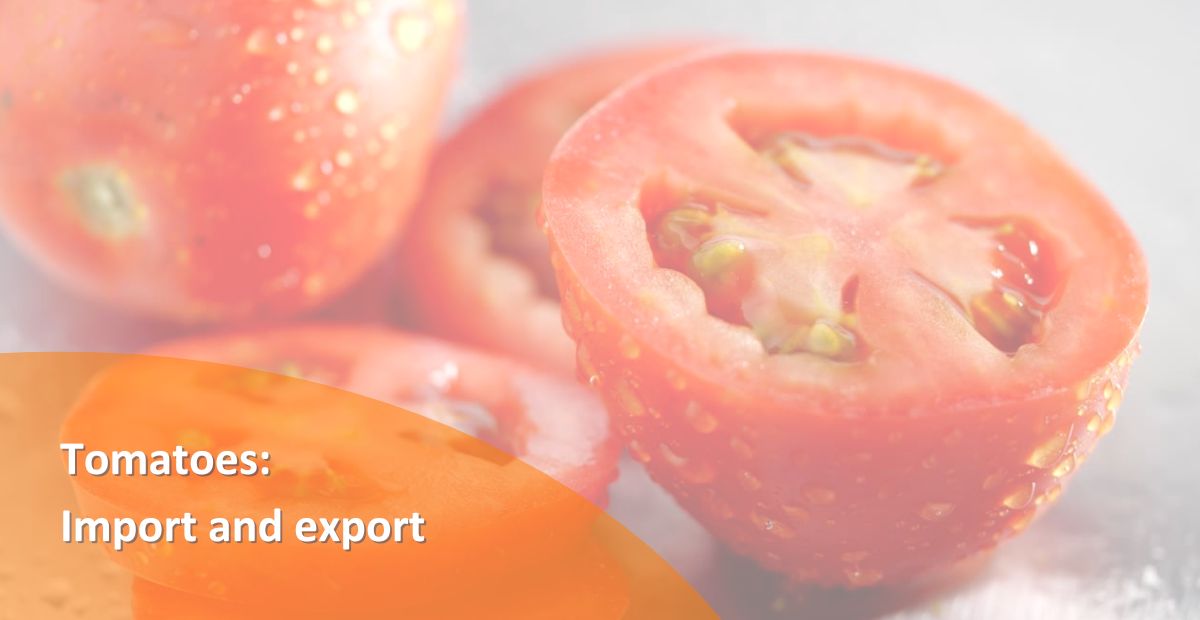PRODUCT CLASSIFICATION
Tomatoes are one of the most widely cultivated and consumed vegetables in the world, known for their culinary versatility and nutritional values such as vitamins, minerals and powerful antioxidants like lycopene.
They play a central role in countless dishes across global cuisines and are used in many forms due to their adaptability, for example fresh in salads, cooked in sauces, soups and stews, or processed into canned tomatoes, purée, ketchup and juices.
Tomatoes are a part of the Edible vegetables, roots & tubers, a category of the Vegetable Products section that includes a wide range of consumable greens like spinach, lettuce, kale, cabbage, cucumbers, artichokes, celery and fennel.
They also have a Product Complexity Index of -1.12, ranking 886 out of 1044 products in 2023.
This post will not consider a specific country’s market, but it will be focused on the Tomatoes trade in general.
OVERVIEW
In 2023, global trade of Tomatoes reached an amount of $11.5B, reflecting an increased percentage of 10.4 from 2022, when it totaled $10.4B and, over the past five years, it has grown at an annualized rate of 4.2%.
In addition, during the same year, Tomatoes ranked 327 out of 1217 products, accounting for 0.051% of world trade.
EXPORT
In 2023 it was estimated that the main characters in the exportation scenario of Tomatoes were
- Mexico - $3.06B;
- Netherlands - $1.71B;
- Morocco - $1.59.
Also, during the same year, the countries that registered the highest share of the category in their export portfolios were
- Syria – 3.48%;
- Morocco – 3.22%;
- Afghanistan – 2.73%.
IMPORT
In 2023 it was revealed that the leading importers of the Tomatoes category in global trade were
- United States - $3.31B;
- Germany - $1.71B;
- France - $1.11B.
CONCLUSIONS
In 2023, Tomatoes confirmed their role as one of the most important and widely consumed crops in the world. From fresh markets to processed goods, they are a key ingredient in global diets and cuisines and a strong demanded product across continents, despite facing challenges like climate change and shifting agricultural conditions.
Their versatility, nutritional values and cultural importance make them not just a staple food, but a symbol of how deeply agriculture connects to everyday life worldwide.
Source: https://oec.world/en




